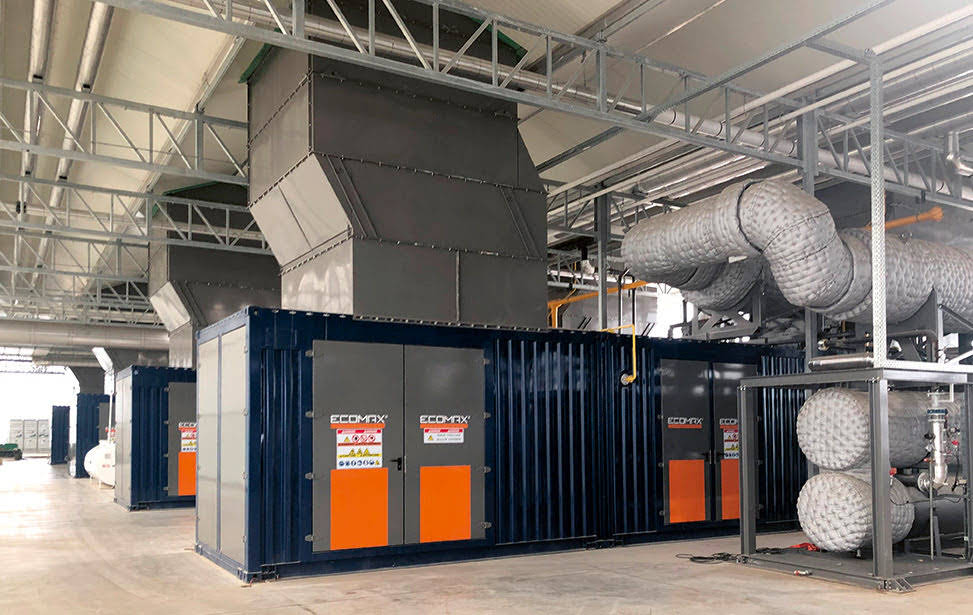- English

Having worked almost 30 years in the greenhouse industry, I am still impressed with the innovation of the industry and the positivity greenhouses bring to people and the environment. Greenhouses mean growing local food for local consumption in the most energy efficient way, using limited amounts of water and avoiding the use of pesticides to produce healthy fresh food with high quality.
There is no industry that is so flexible to adapt changes due to environmental conditions, preference of consumers, labor restrictions and energy challenges.
Greenhouses are the solution to feed the worlds growing population in the years to come.
For years CHP has been an important asset in the greenhouse industry to deliver electrical power, heat (cooling) and CO2 to the greenhouse to reduce the cost of growing. CHP delivers energy with a typical total fuel use efficiency greater than 90%. Electrical power and CO2 can be produced when needed while the produced heat (hot water) can be stored in on site thermal storage tanks for use during other times of the day. The captured CO2 is used to raise productivity, crop yields and improve crop quality in the greenhouse. To scrub the CO2 from the exhaust gasses a catalyst is installed which reduces the stack emissions to very low levels, as a result the CHP systems comply with required local emission guidelines.
As we all now CO2 is needed for plants to grow and an essential fertilizer in the greenhouse industry. Onsite production of CO2 avoids offsite production and transportation of CO2 from somewhere else, which reduces the carbon footprint. The industry is working on new technologies to scrub the CO2 even more effectively in the future.
The world is striving towards a carbon neutral/negative electric grid. CHP systems serving greenhouses can play a very important role in maximizing the use of renewable energy sources like wind and solar. Due to presence of onsite thermal storage, CHP systems serving greenhouses can help to stabilize the grid when there is a shortage of power by supplying power back into the grid.
The future electric renewable grid will require significant grid stabilization tools to maintain reliability because of the intermittency of electricity production from wind and solar power. Greenhouses with grow lights can switch off the lights, shed load, to supply maximum electric power to the grid as a low cost means of providing grid stabilizing services. The only thing required is a simple signal from the grid operator as the CHP units can offer 24/7 stand by power. Greenhouses can also create load by using electrical boilers. The heat produced by the electrical boilers is not lost can be stored in the thermal storage tank.
Greenhouses with CHP can also run independently from the grid when there is a grid outage, securing our food supply. We have seen many examples in the US where nature disasters caused long lasting grid outages, with onsite CHP growers can overcome this issue. An additional advantage is that CHP units are ready to run on renewable natural gas which makes the system future proof when renewable gas starts to become widely available. There is not a single technology that is as efficient as onsite greenhouse CHP supplying electricity, heat, cooling and CO2 to a greenhouse running on renewable natural gas.
Ideally greenhouses will have their own microgrid where CHP, solar, battery storage, boilers and heat storage can secure the most efficient and sustainable energy supply to grow local food for local consumption. Greenhouses and CHP will be an important tool in the transition towards a carbon neutral/free world. Solving our water and food shortages as the world will need at least 50% more food by 2050 to feed the growing population.
We hope that grid regulators and policy makers will recognize the importance of the greenhouse sector using CHP and having a more favorable approach accelerate the use of this technology using natural gas today and renewable fuels when they become available. AB Energy is for many years a leading player in the global greenhouse CHP industry supplying a fully integrated standardized modular built greenhouse CHP solution with the highest possible energy efficiencies. AB Energy understands the full integration into greenhouses, greenhouse microgrids and can support in designing an optimal solution which has all the flexibility to support grid regulators to solve the growing instability of their electric grids by the growth of renewable energy sources and the growing demand of electrical power.
Dick Kramp
To learn more about AB greenhouse cogeneration plants, please contact Dick Kramp at dick.kramp@gruppoab.com , Hans van den Heuvel at hans.vd.heuvel@gruppoab.com , or for Canadian applications Jan Buijk at jan.buijk@gruppoab.com . Please also visit www.gruppoab.com